Putting a bulb in the ground that may not be viable leads to disappointment more often than not.
After planting, you eagerly await the beautiful flowers it’s supposed to put out… but come bloom time, you might not have any.

We link to vendors to help you find relevant products. If you buy from one of our links, we may earn a commission.
If your life was a movie, at this point it would cut to a cinematically sad “crying-in-the-garden” montage.
For added dramatic effect, you would also snap your garden fork over your knee like a golfer after a missed putt, vowing to never attempt this gardening nonsense ever again.
However, if you knew whether or not the bulb was good from the beginning, you could have saved yourself the heartbreak of a failed season without flowers by simply avoiding planting any bad ones in the first place.
And you could have saved yourself from having to buy another garden fork too!
Judging the viability of rootstock isn’t super complicated, thankfully. All it takes is a bit of prior knowledge to start, and from there, your skills will only grow with experience.
This guide will help you with the “prior knowledge” part.
Here’s what we’ll go over:
What You’ll Learn
Flowering Bulbs 101
Botanically, a true bulb is an underground stem composed of layered, fleshy, and energy-storing scales.
It also includes a root-producing basal plate, a central shoot that produces flowers and leaf buds, and lateral buds that produce “bulblet” offsets.
Tunicate true types such as tulips and daffodils possess a skin-like outer tunic that protects the scales, while imbricate types like lilies do not exhibit this type of covering.
Prior to planting, imbricate varieties require constant moisture so their scales don’t dry out and cause irreparable damage to the developing plant within.

However, many folks use the word “bulb” as a catchall to describe any bit of flora with an underground structure that stores energy for dormancy.
Such a definition is pretty broad: it includes corms, tubers, and rhizomes as well.
Corms have a thin tunic but they don’t form layered scales – just a mass of storage tissue. Corm-producing flowers include crocuses and gladoli.
Tubers lack a basal plate that forms roots and they don’t form a tunic. The common potato is a well-known tuber, along with caladiums and anemones.
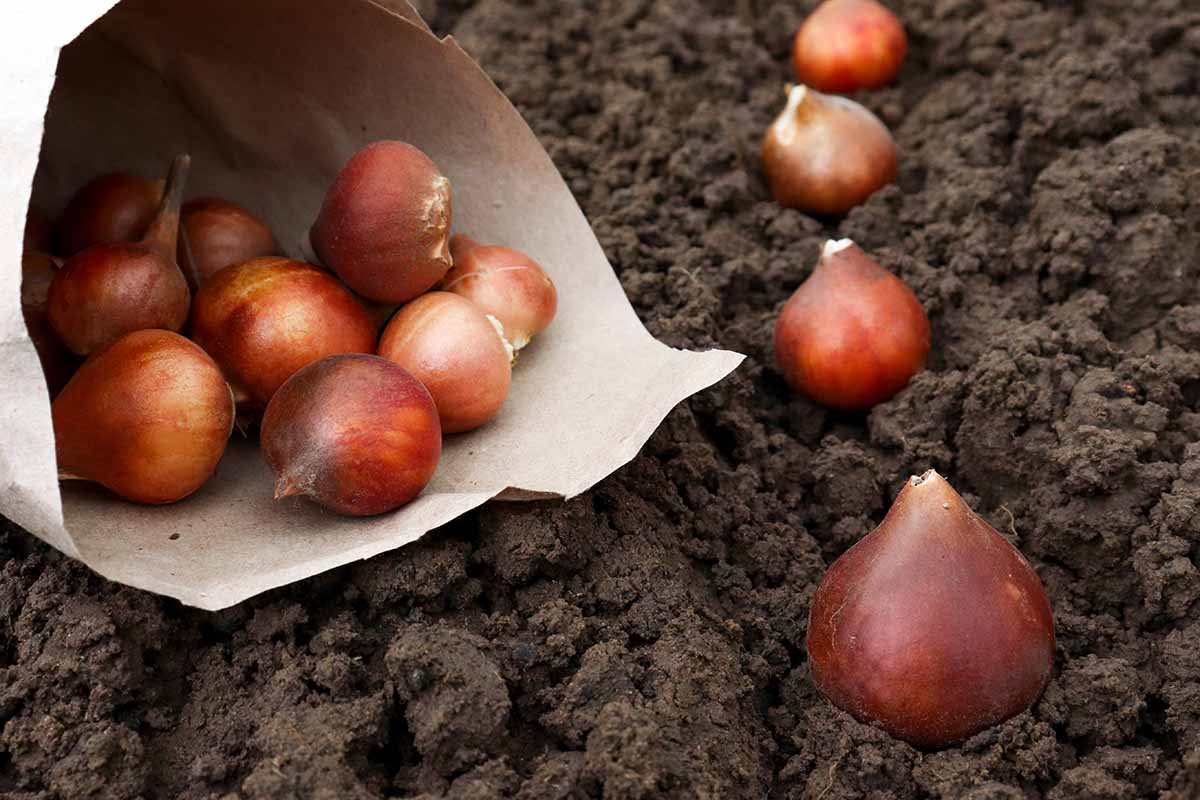
Rhizomes are laterally-growing stems that produce roots and shoots from nodes.
This makes it really easy for plants to spread horizontally – awesome if that’s desirable in your garden, less so if it’s an invasive species or something previously welcome that is now encroaching on other plantings in your flower beds.
Bloodroot, snake plants, and bamboo are all examples of rhizomatous plants, as well as species known for their blooms such as lily of the valley.
For the sake of simplicity – and the fact that many gardeners grow various flowering species commonly referred to this way – I’ll be referring to all the above-described rootstock generically as “bulbs” from here on out.
Indicators of viability are the same for all of these, generally speaking.
As for viability itself, what we’re looking at here is the ability of the rootstock to grow and produce those much-loved flowers.
In a healthy dormant state, viable rootstock is alive and ready to grow – given the proper conditions, it will emerge from dormancy and sprout after it’s planted.
Signs of a Bad Bulb
Whether you’re at the store making your selections for planting, or inspecting existing bulbs or ones that have been kept in storage, the process here is the same.
When checking for viability, there are a few things to monitor and keep an eye out for.
More than one of these signs can be present simultaneously, and they can often influence each other as well.
Age, for example, can cause plants and rootstock to be more prone to infection, and pests may serve as vectors of disease.
If one or more of these signs are detected, then the bulb in question is not “good” or likely to be viable, and it should be pitched.
Rot and Infection
If a bulb exhibits signs of a gnarly fungus or bacterial infection, then planting it would probably be a waste of time and energy.
It can also be dangerous for the other flora in your garden, as fungal pathogens and bacteria can easily spread.
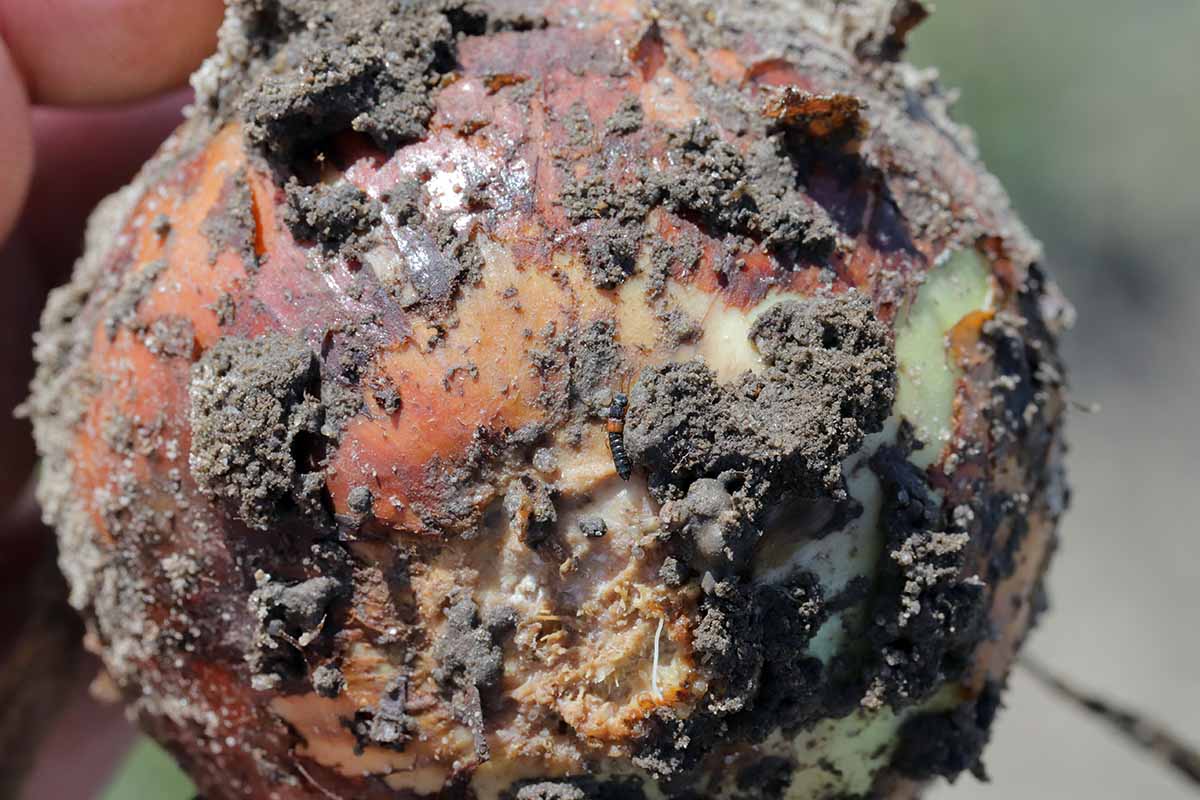
If you note soft spots, dark discolorations, blackened sclerotia, sliminess or a water-soaked appearance, decay, and/or fuzzy mold, you may have a fungal or bacterial infection of some sort on your hands.
Infected rootstock should be disposed of as soon as you discover it, and your best course of action may be to tip the whole lot.
Otherwise, you’ll need to keep a close eye on any healthy-looking ones stored nearby or purchased in the same package in case they manifest noticeable symptoms later.
It probably goes without saying, but anything that’s rotted from the inside-out won’t function well in the garden, either.
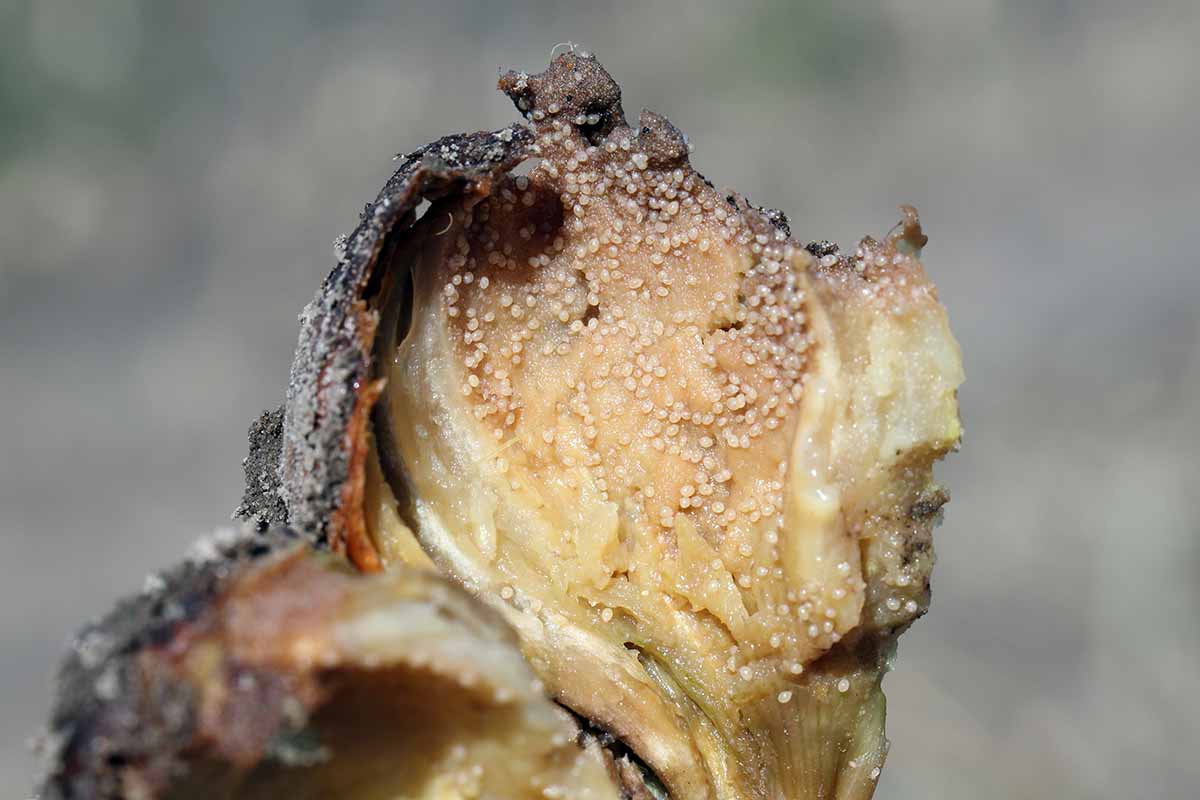
Symptoms of rot include mushiness, desiccation, shrinkage, or even a funky smell. But for foolproof rot detection, try the bucket test.
Take the bulbs you want to test before planting and toss them in a bucket of water.
The dense and healthy ones will sink, while any lighter, rotted-out ones will float. Discard those before you plant the rest.
Pest Damage
If your rootstock has been infested with insects or munched on by small mammals, then it probably won’t grow very well, if at all.

Signs include feeding damage, discoloration, sunken spots, and/or tunnels created by burrowing pests.
Toss the offending members of your unplanted stash if you note evidence of an infestation, and closely monitor or consider discarding any remaining healthy-looking ones.
The bucket test may also be used as described above.
Old Age
Nothing lasts forever… If a bulb is getting up there in years, it will naturally lose viability and eventually fail to bloom.
Most individual bulbs have a lifespan or two to five years in the garden. Fortunately, many types will multiply and spread readily, via underground bulblets, tubers, or rhizomes that are produced to replace the ones you planted.
Any unplanted rootstock that has been in storage for more than 12 months probably won’t be viable, either.
Aim to get yours in the ground quickly after purchase or at the appropriate time after storage. Depending on the variety, this may be in the fall or in the spring after the threat of frost has passed.
Tips to Prolong Bulb Health and Longevity
Congrats! You’re now equipped to filter out bad bulbs while selecting the healthiest rootstock that’s most likely to be viable, which will save you a lot of time and effort in the garden.
But pitching a portion of your precious stock can feel a lot like cutting onions (which are also bulbs, coincidentally): both activities are enough to make a person cry.

So what can you do to keep them healthy and kicking for longer?
First and foremost, cultivate plants with these specialized underground storage organs properly in your garden.
Protect them from pests and disease, and provide them with the proper climate, sun exposure, irrigation, and fertilization.
Tender loving care, both in storage and after planting in the ground or in a container, will produce the best results, whether you’ve planted daffodils that have naturalized and spread, or dahlias with tender tubers that must be lifted and packed away for the winter.
Not sure which varieties require lifting and storage throughout the coldest months of the year in certain regions? Give our handy guide to storing bulbs a read.
And finally, be sure to invest in high-quality bulbs from the get-go, ones that are guaranteed to be disease-free and sourced from reputable nurseries.
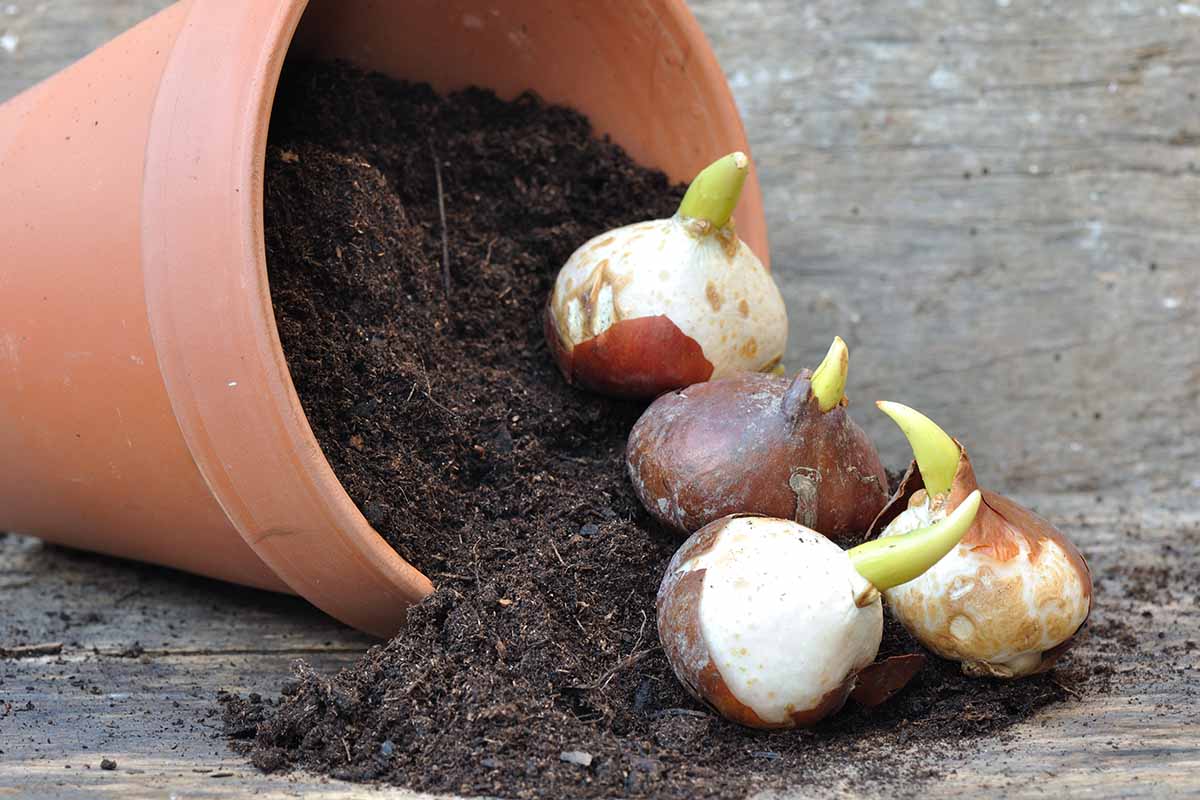
Take a good look if you’re shopping in person, and don’t be afraid to give those bulbs a sniff and a squeeze!
Some folks may already have their own preference, but for those looking for recommendations, Nature Hills Nursery, Eden Brothers, and Burpee are all solid vendors with many options to choose from to plant in your garden.
Become an Effective Garden Detective
Identifying signs of non-viability while keeping your stored bulbs fresh for as long as possible and being able to evaluate their worth prior to purchase will save you effort, resources, and anguish.
Plus, being able to examine bulbs and judge their potential viability yourself is pretty cool – you’re on your way to developing keen observation skills that would make Jason Bourne blush.
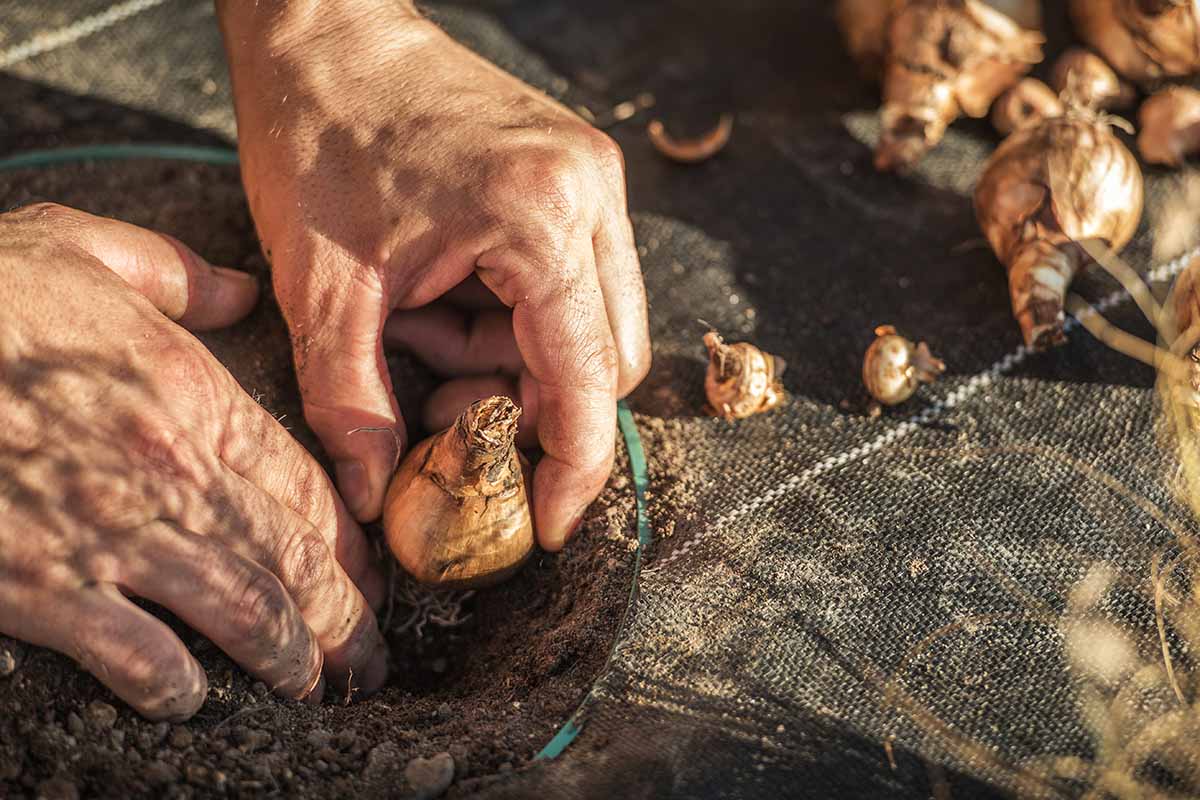
Discernment via sensory cues is a powerful, yet underrated gardening skill.
If this guide helped to sharpen your ability to discern whether or not some of the most popular spring- and summer-blooming favorites are still good to go at planting time, then that’s a pretty big win in my book!
If you have any questions or remarks to share regarding anything discussed here, hit me with ’em in the comments section below!
Has this article gotten you jazzed about growing more flowers that sprout from bulbs, corms, and rhizomes? Here are a few that I think you’ll just love growing at home:


